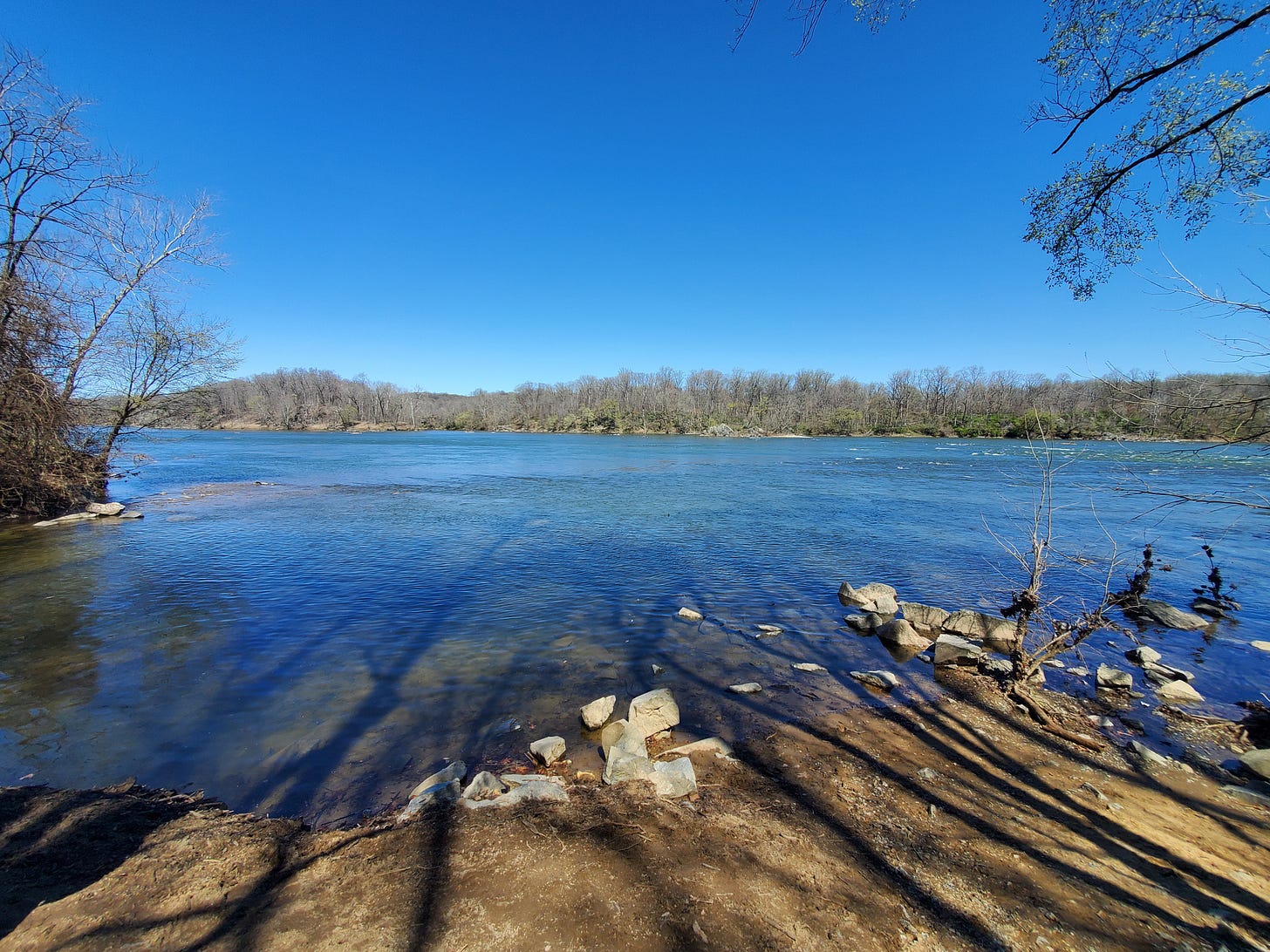Last Sunday, my wife and I attended a local naturalist’s small meetup at a Fairfax County park along the Potomac River.
We’ve done his walks before—before the pandemic, we foraged pawpaws (made ice cream) and persimmons (made sour faces) in Maryland. It had been awhile.
Back in the early 1970s, the park where we met nearly became a subdivision. It was spared that fate—for the good, probably—but how much similar natural space is destroyed because of anti-housing sentiment? There’s a line we’ll say, to the effect of, every urban tree lost in a place like Arlington saves 100 trees in a place like Gainesville.
And this isn’t even a piece about urbanism!
We spent pretty much the whole day at the park, and it was a really lovely, relaxing experience. A lot of folks do the “weekend warrior” routine—slog through an inhuman work week, then wake up at an ungodly hour to hike/bike/fish all weekend—but we walked slowly, stopped to identify and discuss plants, and chatted with each other.
It was a small group, which included an exceptionally behaved four-year-old child who made it through an approximately two-mile hike before his family headed home. My wife and I stuck around with the hike leader and another participant, and slow-hiked for another two and a half hours.
And we learned a lot about plants. It’s fascinating how the generality of a lack of familiarity—“yeah, those are all…plants”—begins to give way to a sharpness of perception. The minute differences between this or that yellow flower, or this or that vine, start to become apparent. Sameness is in the eye of the beholder.




